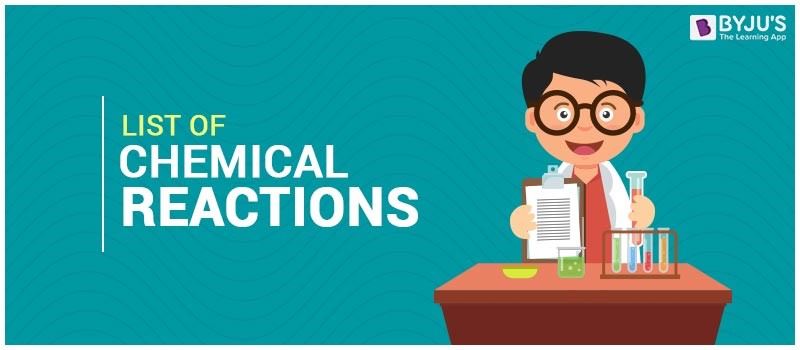
What is a Chemical Reaction?
A chemical reaction is a reaction in which the bonds are broken within reactant molecules(compounds or elements present on the left side of the arrow), and new bonds are formed within product molecules (compounds or elements present on the right side of the arrow) in order to form a new substance.
Chemical reactions are an imperative part of our lives and the things that happen in our known universe. Even the simplest of things we are negligent about, the human body is a site for 37 thousand billion chemical reactions every second.
To help us understand the world around us by looking into a list of chemical reactions that occur around us.
Table of Contents
- Photosynthesis
- Electrolysis of water\ Combustion of hydrogen
- Formation of Calcium Carbonate
- Rusting of Iron
- Ageing of wine
- Making of sulphuric acid
- Recommended Videos
Photosynthesis
The process of photosynthesis as we all know is the way by which plants take in carbon dioxide to give out oxygen to the surroundings. Glucose is the main product of the reaction. Photosynthesis can be expressed using the chemical reaction as stated below:
Electrolysis of water\ Combustion of hydrogen
The simplest of processes by which water is formed combining oxygen with hydrogen. In the forward direction, the reaction requires high activation energy which will result in an exothermic reaction. The reaction goes as mentioned below:
Formation of Calcium Carbonate
The shells of various sea creatures and the shells of the eggs of birds and reptiles are all made of calcium carbonate. Let us look at the reaction that takes place:
Rusting of Iron
Iron is one of the most abundant metals we see around us on a daily basis. That is also why we see iron with the most amount of corrosion. Rusting is the corrosion of the metal Iron. What happens in rusting is that the oxygen atoms attack the iron to form iron oxides. This can be represented using the equation stated below:
Ageing of wine
This is the oxidation of alcohol. As time passes wine becomes sour and with exposure to air, the alcohol in the wine is converted to acetic acid. The reaction of which is mentioned below:
Making of sulphuric acid
Being one of the most important chemicals and indicators for a long time, sulphuric acid was produced in an overall quantity of 180 million tones in 2004. Fertilisers use sulphuric acid to get superphosphates, ammonium sulphates and ammonium phosphate. The reaction of the formation reaction of sulphuric acids is given below.
Recommended Videos
General Chemical Reactions

To learn more about chemical reactions, Register with BYJU’S and download our app.
‘

Comments